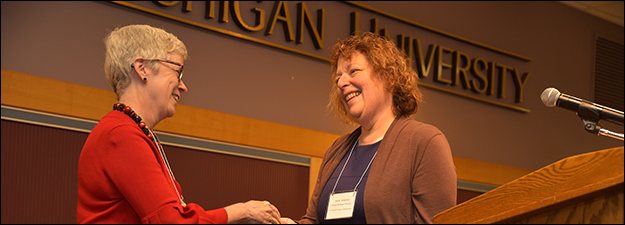Spectatorship and Observation in the Medieval Arts
Sponsoring Organization(s)
Medieval Studies Workshop, Univ. of Chicago
Organizer Name
Carly B. Boxer, Samuel Lasman
Organizer Affiliation
Univ. of Chicago, Univ. of Chicago
Presider Name
Carly B. Boxer, Samuel Lasman
Paper Title 1
Spies Like Us: Tristan and Isolde's Hidden Observers
Presenter 1 Name
Beth Woodward
Presenter 1 Affiliation
Univ. of Chicago
Paper Title 2
Ceremony and the Beholders at Reims Cathedral (ca. 1230): Seeing and Participating in the Coronation of the King
Presenter 2 Name
Gili Shalom
Presenter 2 Affiliation
Tel-Aviv Univ.
Paper Title 3
To Be Seen: The Politics of Gaze and Observation
Presenter 3 Name
Kathrin Gollwitzer-Oh
Presenter 3 Affiliation
Univ. of California-Berkeley
Paper Title 4
Ad Orientem: Seeing Christ's Back in the Early Medieval Ascension
Presenter 4 Name
Nancy Thebaut
Presenter 4 Affiliation
Univ. of Chicago/Institut national d'histoire de l'art
Start Date
14-5-2017 8:30 AM
Session Location
Schneider 1325
Description
In contemporary studies of the Middle Ages, questions of visuality have increasingly dominated analyses of artistic production, in part because of the central role of vision in medieval theological and scientific discourse. This session seeks to broaden the conversation around medieval visuality by asking not only what it meant to see in the Middle Ages, but also what it meant to be seen, and how these networks of viewership could be depicted in the pictorial arts, literature, architecture, music, and drama. Unlike more general categories of vision and visuality, spectatorship and observation categorize modes of looking in which visual acuity, aesthetic sensitivity, sustained attention, and a focus on the specific character of the object of one’s gaze become central. This session will consider evidence of these practices of viewership as a means of thinking expansively about how medieval viewers looked at their objects of attention, and how relationships between a medieval beholder and the object of their gaze could be portrayed. How, for example, do tropes such as spying, blindness, dream visions, and tournaments in literature attest to the importance of spectatorship for medieval readers? How do medieval images demonstrate the centrality of observation in the facets of medieval life they depict? This session refocuses the discussion about vision and visuality around the ways in which different modes of looking would have inflected the experiences of medieval readers and viewers, and how these processes of viewership were documented, represented, and interrogated in the artistic productions of the Middle Ages.
Carly B. Boxer
Spectatorship and Observation in the Medieval Arts
Schneider 1325
In contemporary studies of the Middle Ages, questions of visuality have increasingly dominated analyses of artistic production, in part because of the central role of vision in medieval theological and scientific discourse. This session seeks to broaden the conversation around medieval visuality by asking not only what it meant to see in the Middle Ages, but also what it meant to be seen, and how these networks of viewership could be depicted in the pictorial arts, literature, architecture, music, and drama. Unlike more general categories of vision and visuality, spectatorship and observation categorize modes of looking in which visual acuity, aesthetic sensitivity, sustained attention, and a focus on the specific character of the object of one’s gaze become central. This session will consider evidence of these practices of viewership as a means of thinking expansively about how medieval viewers looked at their objects of attention, and how relationships between a medieval beholder and the object of their gaze could be portrayed. How, for example, do tropes such as spying, blindness, dream visions, and tournaments in literature attest to the importance of spectatorship for medieval readers? How do medieval images demonstrate the centrality of observation in the facets of medieval life they depict? This session refocuses the discussion about vision and visuality around the ways in which different modes of looking would have inflected the experiences of medieval readers and viewers, and how these processes of viewership were documented, represented, and interrogated in the artistic productions of the Middle Ages.
Carly B. Boxer


